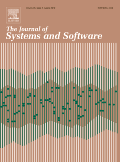
JOURNAL OF SYSTEMS AND SOFTWARE
Scope & Guideline
Unveiling Cutting-Edge Research in Systems and Software.
Introduction
Aims and Scopes
- Software Testing and Quality Assurance:
The journal emphasizes methodologies for improving software testing, including automated testing frameworks, test case generation, and quality assurance practices to ensure reliability and performance in software products. - Software Security and Vulnerability Management:
A significant focus is placed on identifying and mitigating security vulnerabilities in software systems, exploring techniques for secure coding, vulnerability detection, and risk assessment. - Software Architecture and Design Patterns:
The journal covers research on software architecture, including architectural design patterns, microservices, and system resilience, aiming to provide insights into effective software structure and organization. - Machine Learning and Artificial Intelligence in Software Engineering:
Emerging trends in integrating AI and machine learning into software engineering practices are explored, including applications in code analysis, bug prediction, and automated decision-making. - Human Factors in Software Engineering:
Recognizing the role of human factors, the journal addresses aspects such as team dynamics, developer behavior, and user experience in the context of software development and maintenance. - Agile and DevOps Methodologies:
Research on agile practices and DevOps principles is prevalent, examining how these methodologies enhance collaboration, productivity, and software delivery processes. - Software Development Tools and Environments:
Investigation into tools that support software development processes, including integrated development environments (IDEs), version control systems, and collaborative platforms. - Sustainability and Ethical Considerations in Software Engineering:
The journal addresses sustainability in software development practices and ethical considerations related to software engineering, including privacy, data protection, and the impact of technology on society.
Trending and Emerging
- DevSecOps and Continuous Security Practices:
There is a growing trend towards integrating security into DevOps practices, known as DevSecOps, highlighting the importance of security throughout the software development lifecycle. - AI and Machine Learning Applications:
The application of AI and machine learning techniques in software engineering, particularly for tasks like bug prediction, code generation, and automated testing, is rapidly gaining traction. - Microservices and Cloud-Native Architectures:
Research focusing on microservices and cloud-native development is on the rise, addressing the challenges and best practices for building scalable, resilient software systems. - Data-Driven Software Engineering:
The trend towards leveraging data analytics to inform software engineering practices, including decision-making and process optimization, is becoming increasingly prominent. - User-Centric and Inclusive Design:
There is a heightened focus on user experience, accessibility, and inclusive design practices in software engineering, reflecting a broader societal push towards equity in technology. - Ethics and Responsible AI in Software Development:
Research exploring the ethical implications of software engineering practices, particularly concerning AI, data privacy, and user consent, is emerging as a critical area of focus.
Declining or Waning
- Legacy Software Systems:
Research focusing on legacy systems and their maintenance has become less frequent, possibly due to the industry's shift towards modern architectures and cloud-based solutions. - Formal Methods in Software Engineering:
Although formal methods played a crucial role in software verification, there has been a noticeable decrease in publications related to this area, indicating a potential shift towards more practical, less formalized approaches. - Traditional Software Development Methodologies:
As agile and DevOps practices gain traction, traditional methodologies such as waterfall and V-model have seen a decline in research focus, reflecting a broader industry shift. - Static Analysis Techniques:
The frequency of research dedicated to static analysis tools and techniques has waned, possibly due to the rise of more dynamic and context-aware analysis methods. - Empirical Studies on Software Maintenance:
There has been a reduction in empirical studies specifically targeting software maintenance practices, as newer topics gain attention.
Similar Journals

Jordanian Journal of Computers and Information Technology
Fostering Global Dialogue in Computer Science and ITJordanian Journal of Computers and Information Technology, published by Princess Sumaya University and SRSF, stands as a significant platform for scholarly research in the realm of computer science, particularly in topics related to emerging technologies and information systems. With its Open Access model initiated in 2015, the journal facilitates global access to high-quality research findings, embodying the principles of knowledge sharing and academic collaboration. The journal's ranking in the Q3 category of Computer Science (miscellaneous) and its placement in the 54th percentile of Scopus' General Computer Science rankings underscore its growing reputation among researchers and professionals alike. Situated in Amman, Jordan, the journal actively contributes to the regional and international discourse on computing methodologies, applications, and innovations, making it an indispensable resource for scholars seeking to advance their understanding and engage with contemporary issues in technology.

Journal of Advances in Information Technology
Shaping the Future of Tech through ResearchJournal of Advances in Information Technology, published by ENGINEERING & TECHNOLOGY PUBLISHING, is an essential platform for researchers, professionals, and students invested in the dynamic fields of information technology, artificial intelligence, and computer science. With its ISNN of 1798-2340, this journal provides a rigorous peer-reviewed environment that supports the dissemination of innovative research findings, methodologies, and case studies. Since its inception in 2019, it has made notable strides, as reflected in its Q3 quartile rankings across various categories, including Artificial Intelligence and Software, and maintains respectable Scopus rankings, further solidifying its position as a key player in the academic community. Featuring a diverse range of topics within its scope, the journal encourages open access to knowledge while serving as a beacon for those seeking to expand their understanding of current trends and technologies shaping the future. Join us in advancing the field with impactful research that is both relevant and cutting-edge.

Journal of Cryptographic Engineering
Empowering researchers to unlock the potential of cryptographic engineering.The Journal of Cryptographic Engineering, published by Springer Heidelberg, is a prominent platform dedicated to advancing the field of cryptography and its applications in secure communication and information security technologies. With the ISSN 2190-8508 and E-ISSN 2190-8516, this journal showcases rigorous and innovative research contributions from 2011 to 2024, reflecting its commitment to excellence in academic publishing. Recognized among the Q2 category in Computer Networks and Communications and Software, it ranks impressively within the Scopus framework, securing positions in the 59th and 54th percentiles respectively. The Journal aims to facilitate a comprehensive understanding of cryptographic techniques, promote collaboration among researchers, and provide a vital resource for students and professionals. By maintaining high standards of peer review and providing a platform for cutting-edge research, it plays a crucial role in shaping the future of cryptographic engineering.
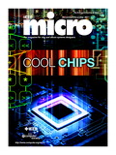
IEEE MICRO
Unveiling Breakthroughs in Electrical and Electronic EngineeringIEEE MICRO is a prestigious journal published by the IEEE Computer Society, focusing on the latest advancements in the fields of electrical and electronic engineering, hardware, and software architecture. With a remarkable track record since its inception in 1981, this influential journal holds a Q1 classification in its respective categories, underscoring its significant impact in research and practical applications. The journal enjoys an impressive ranking within the 80th percentile in Electrical and Electronic Engineering and the 78th percentile in Hardware and Architecture, further cementing its reputation among the academic and professional community. Though not an open access journal, IEEE MICRO provides vital insights and cutting-edge research findings that shape the future of technology, making it an essential resource for researchers, practitioners, and students eager to stay at the forefront of innovation.

Automated Software Engineering
Advancing the Future of Software EngineeringAutomated Software Engineering is a premier journal dedicated to advancing the field of software engineering through the exploration of innovative methodologies, tools, and applications. Published by Springer since its inception in 1994, this journal has established itself as a vital resource for researchers, industry professionals, and students alike, providing insights into the latest trends and technological advancements. With an impressive impact factor and currently ranked in the Q2 quartile of the Software category, it is recognized for its contribution to the discipline. The journal covers a broad scope of topics including automation in software development, empirical studies, and theoretical advancements, fostering discussions that bridge academia and industry. As we look forward to converging towards the year 2024, the journal continues to invite high-quality submissions that challenge existing paradigms and pave the way for future innovations in software engineering.
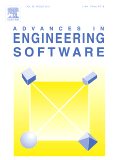
ADVANCES IN ENGINEERING SOFTWARE
Exploring Interdisciplinary Frontiers in Software Development.ADVANCES IN ENGINEERING SOFTWARE, published by Elsevier Science Ltd, stands at the forefront of interdisciplinary research in the realms of engineering and software development. With an impressive impact factor reflected in its Q1 and Q2 rankings in the Engineering (Miscellaneous) and Software categories, respectively, this journal serves as an essential platform for researchers and practitioners alike to disseminate innovative findings and methodologies from 1982 to the present. Strategically positioned within the United Kingdom, it engages scholars, professionals, and students by publishing high-quality articles that emphasize advancements in software applications related to engineering challenges. Although it does not currently offer open access, the journal remains highly regarded within the academic community, consistently attracting impactful research and maintaining a commendable Scopus ranking within the top tiers of both general engineering and software disciplines. Explore the latest contributions to enhance your knowledge and stay updated on trailblazing developments in engineering software.
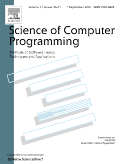
SCIENCE OF COMPUTER PROGRAMMING
Transforming Ideas into Computational ExcellenceScience of Computer Programming, published by Elsevier, is a leading journal dedicated to advancing knowledge in the fields of computer programming, computational theory, and software development. With a focus on interdisciplinary research that spans computational methodologies, information systems, and simulation modeling, this journal plays a vital role in disseminating innovative findings and fostering collaboration among experts in these dynamic areas. With a respectable impact factor and ranked in various Scopus Categories such as computational theory (Q3) and information systems (Q2), it provides a platform for high-quality scholarly articles that push the boundaries of programming science. Although currently not open access, the journal offers invaluable insights for researchers, professionals, and students alike, ensuring they are equipped with the latest advancements and methodologies to thrive in an ever-evolving technological landscape. The journal covers research from its convergence starting in 1981 and continues to welcome groundbreaking contributions as it looks forward to an exciting future through 2025 and beyond.

SOFTWARE-PRACTICE & EXPERIENCE
Transforming software experience through high-quality research.SOFTWARE-PRACTICE & EXPERIENCE, published by Wiley, is a prestigious journal that has significantly contributed to the field of software engineering since its inception in 1971. With a Q2 ranking in Software according to the 2023 category quartiles, it stands among the top tier of journals, positioned in the 79th percentile within Scopus’s Computer Science _ Software category. The journal focuses on disseminating high-quality research that reflects both academic rigour and practical application in software-related practices, ensuring that it remains relevant for researchers, professionals, and students alike. Although it does not currently offer Open Access options, it continues to provide invaluable insights and thorough explorations of contemporary issues in software development, methodology, and experience. As it converges toward 2024, SOFTWARE-PRACTICE & EXPERIENCE aims to foster a greater understanding of effective software practices in a rapidly evolving technological landscape.

COMPUTER
Exploring the Future of Computing, One Article at a Time.COMPUTER, published by the IEEE COMPUTER SOC, stands as a pivotal resource in the field of computer science, encompassing a broad range of topics and innovations within the industry. With an ISSN of 0018-9162 and E-ISSN 1558-0814, this esteemed journal features high-impact research articles that contribute significantly to the advancement of technology, demonstrating a prestigious Q1 classification in the Computer Science (miscellaneous) category for 2023. Positioned within the top percentile of Scopus rankings (ranked #84 out of 232), COMPUTER serves as an essential platform for sharing pioneering ideas and emerging trends that shape the future of computing. Although it does not currently offer open access, the journal's rigorous peer-review process ensures the publication of high-quality content. Researchers, professionals, and students alike will find invaluable insights into computer science developments from 1970 through 2024, making it a vital tool for anyone dedicated to this ever-evolving field.
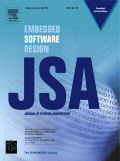
JOURNAL OF SYSTEMS ARCHITECTURE
Pioneering Discoveries in Computer SystemsJOURNAL OF SYSTEMS ARCHITECTURE is a prestigious academic journal published by ELSEVIER, based in the Netherlands, that has established itself as a leading platform for research in the fields of Hardware and Architecture and Software. With an impressive impact factor and ranked in the Q1 category for both computer science sectors, this journal is recognized for its high-quality contributions, evidenced by its Scopus ranking of #32 in Hardware and Architecture and #74 in Software, placing it in the top percentiles of its field. The journal spans a wide range of topics central to systems architecture, focusing on innovative research that advances the understanding of computer systems and promotes future developments. Researchers, professionals, and students alike will find invaluable insights and emerging trends that address the challenges and opportunities within the rapidly evolving field of systems design and architecture. Spanning from 1996 to 2024, the JOURNAL OF SYSTEMS ARCHITECTURE continues to be a vital resource for those seeking to stay at the forefront of technology and research.